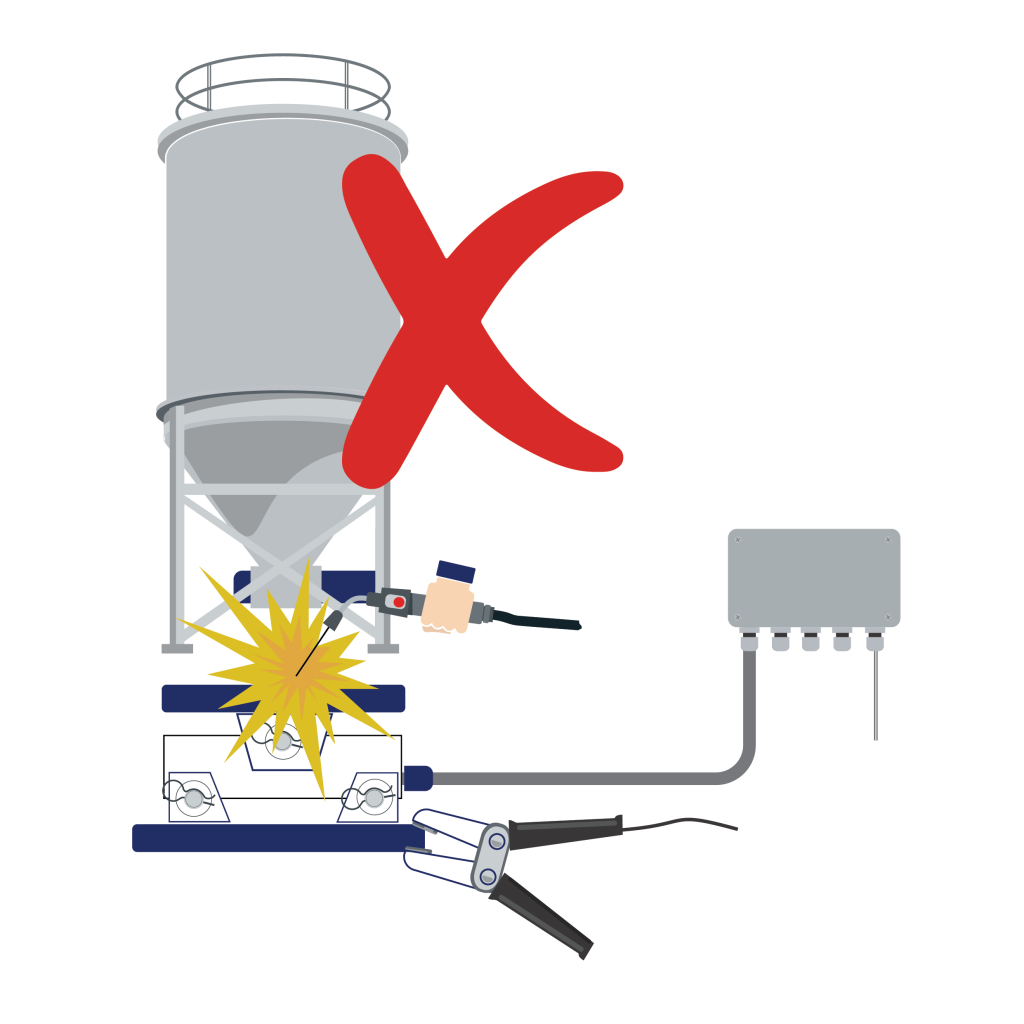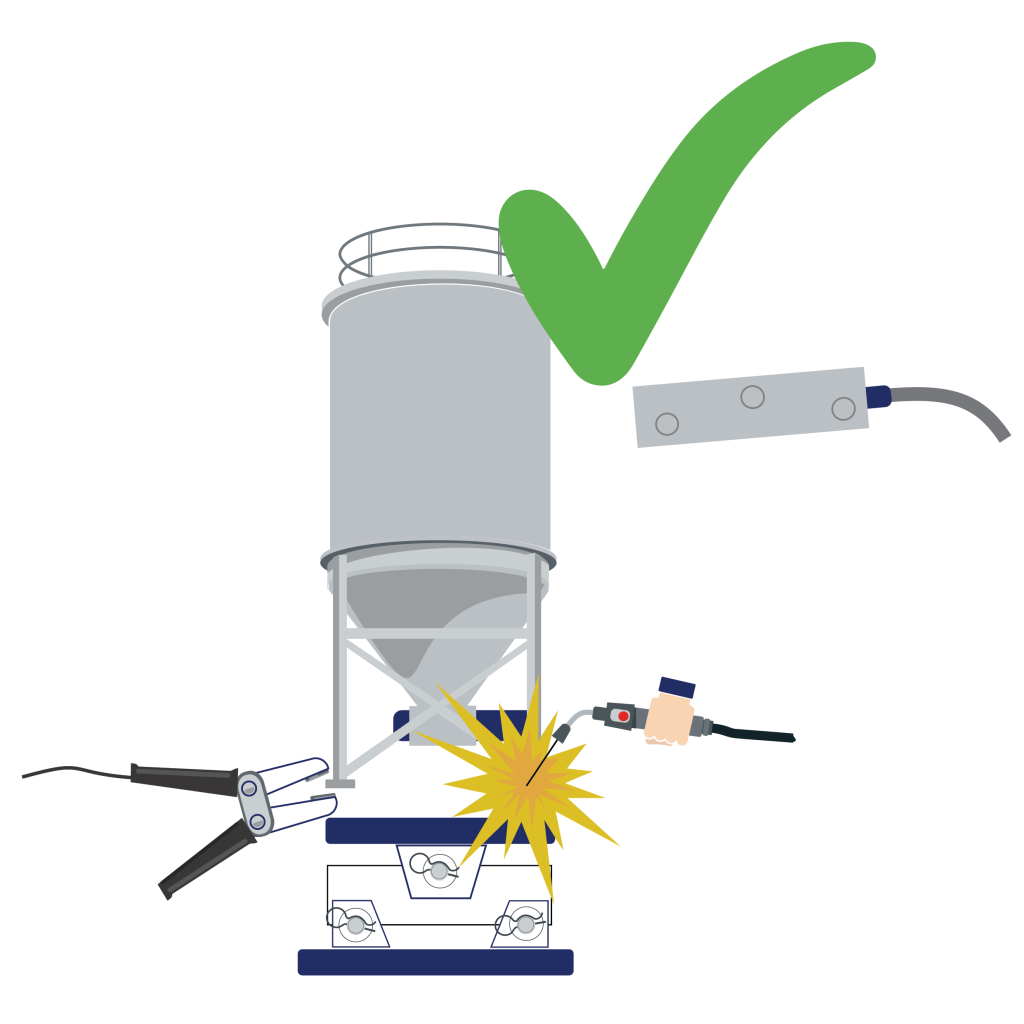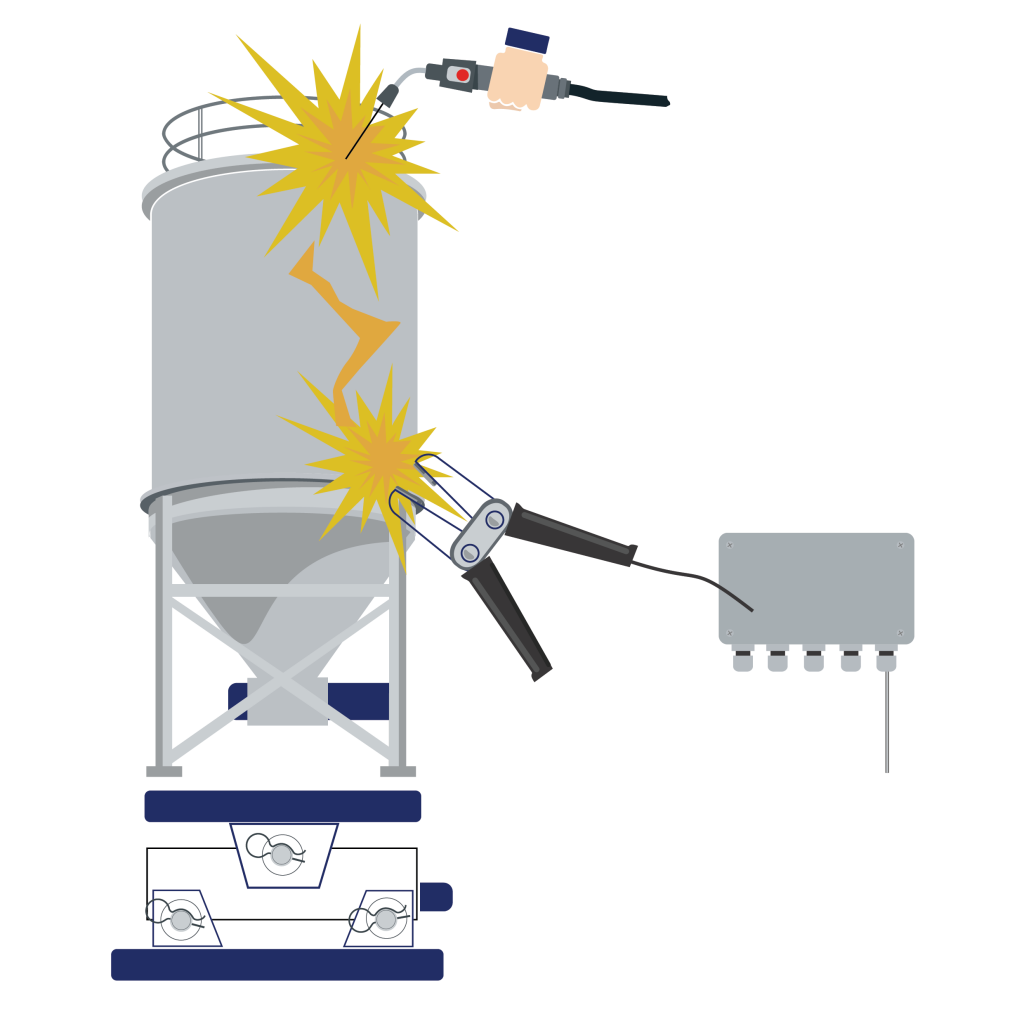You want an easy life and so does your load cell. Load cells are fragile, and their accuracy is obtained from the tiniest deformations in their structures. Correct storage, handling and preservation is essential to maintaining a load cell’s long-term accuracy and dependability
These include using the correct power supply for your load cell to avoid electrical power surges and short circuits and making sure that everything is properly aligned after the load cell installation. You also have to continuously check on the cell body for corrosion, dents and check the cable assembly for cuts or wear.
Part of taking care of your load cell is making sure that the right steps are followed in welding near the load cell or on the weighing structure itself. This will save your valuable time, resources and keep your load cell working flawlessly. A well-cared-for load cell will repay you with:
- Less Maintenance Costs
- Less Repair Costs
- Less Downtime Costs
BEFORE YOU START WELDING, REMOVE THE LOAD CELL FIRST.

Never weld across an active load cell, or weighing system. Do not connect welding ground to the load cell assembly base. If you must weld close to the assemblies, remove the load cells and follow the steps below:
- Inspect the system attentively and check all the electrical connections.
- Ensure that all sensitive equipment is switched off and disconnected to secure the load cells and wiring from heat, mechanical overload, high voltage, high grounding currents, and molten splatter.
- Use only the appropriate jacking points to support the weight. Lift the weight off the load cell assemblies. Refrain from applying excessive forces on each load cell assembly. Raise the silo until the load cell can move freely within the assembly.
- Detach the circlips and load pins. Detach the live load cell.

5. Fit the dummy load cell. Refit the load pins and circlips. Carefully lower the silo weight onto the dummy cell assembly. Wind the jacking bolts all the way back into the top plate.

6. Examine the mechanical assembly one again and carry out the welding work
WHEN IT IS NOT POSSIBLE TO REMOVE A LOAD CELL
Note that the load cell warranty does not cover any damage that might happen to the load cell if they are left in place. In some instances that the the load cells cannot be removed, take the following precautions to minimize damage:
- Disconnect the load cell from the electrical equipment.
- Connect the input and output leads together and insulate from ground.
- Insulate the shield lead from ground.
- To minimize or decrease the current flow through the load cell, make sure to connect a cable to electrically by-pass the load cell. Connect the upper load cell mounting hardware to a solid ground. Sample cables to be used are AWG #2 stranded copper wire, heavy-duty battery jumper cables, or ropes. Make sure to terminate the cable with bolts to guarantee a low resistance contact between the cable mounting hardware.

5. Make sure to reconnect the load cells to the junction box first once the welding is complete and examine the calibration.
SAFETY TIPS FOR YOUR LOAD CELL
- Never use magnetic clamps because they tend to collect iron filings and make poor contact. Instead, choose substantial manufactured ground clamps and attach the clamp as close to the point of welding as possible.
- Use only the highest possible permitted amperage when welding to keep itto a minimum. You may also use conventional AC or DC welding instead of a Heli-Welder due to its high frequency.
- If your space allows, it’s better to put insulating blocks between the load cell and the structure.
Remember that this article is just a general guideline. Your load cell is a precise and unique equipment- it should be used in conjunction with standards relevant to the application to gain only high-quality, accurate readings and for it to continuously provide acceptable results. It also guarantees convenience and a safe operation. To make sure that your weighing equipment is properly handled, the application engineers from Gedge Systems will be pleased to give you advice on the best possible solution.
GEDGE SYSTEMS
27 Rhur Street,Dandenong South VIC 3175
Australian Contact (03) 9791 8944
International Contact +61 3 9791 8944
